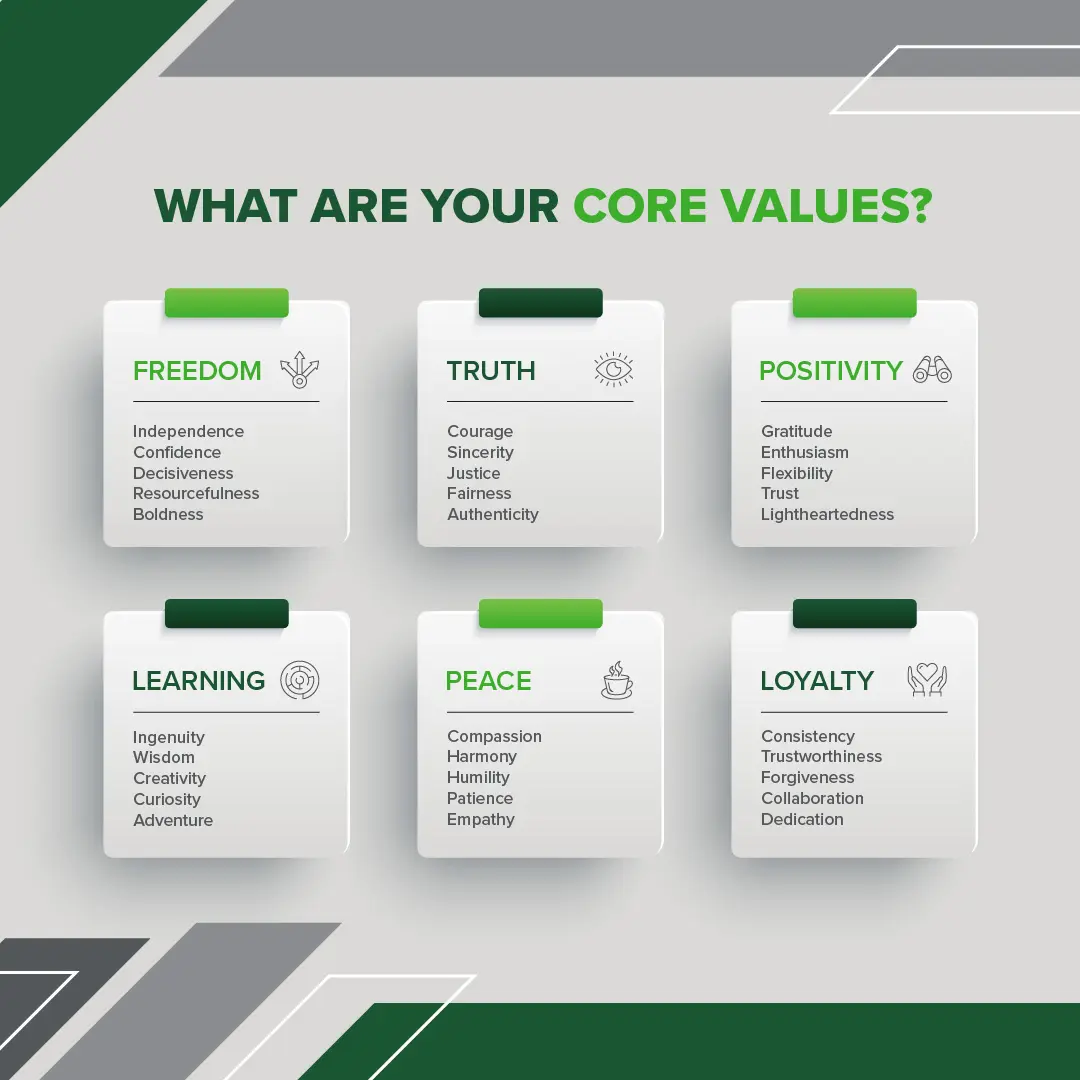If we all lived in a vacuum-sealed world where our minds and emotions didn’t affect our finances, saving money and lowering debt would be a whole lot easier. No bad days to trigger junk food binges, no impulsive vacations, and no mid-life-crisis shopping sprees.
But our minds and emotions do impact finances, even for the most money-savvy. The trick, then, isn’t just identifying your own bad money habits — it’s finding small ways to tweak those habits in the long run. That way, you’re not just lowering your debt; you’re empowering yourself to take control of your finances for good. Here’s how to do it.
At a Glance: How to Lower Your Debt
1. Set positive, values-based money goals.
It’s true that the traditional SMART goal strategy is insanely effective for hammering out specifics. It’s also true that SMART goals skip over the arguably most important part of goal-setting: choosing the right goal. The most meaningful goals are both connected to your core values and structured with a positive mindset.
George Doran et al. coined the term in a 1981 article to describe the traits of meaningful goals. The SMART acronym stands for specific, measurable, attainable, realistic, and timely. Read the original article here.
Values-based goals vs. desire-based goals
Say you want to save money. That’s a desire-based goal because it focuses on what you want, not why you want it. It’s still a great objective, but it has even more potential. Instead of stopping there, tie your goal of saving money back to your core values.
Not sure what your core values are? Answer this: What attributes do I most want to embody in my life? The trick is to think in the abstract. Family and friends may be innately valuable, but they’re not typically considered core values. Sincerity, on the other hand, could be a good option for someone who appreciates authentic relationships and honest communication.
Here are a few examples of values to get you started. Just keep in mind that you’re not limited to this list! Your values are yours to decide and yours alone.

Reframe your goal into something positive.
Once you have a tentative goal in mind, ask yourself this question: Am I working toward something exciting, or am I focused on moving away from something negative?
A 2020 study found that people with approach-based (positive) goals were significantly more likely to accomplish their objectives than those with avoidance-based (negative) goals. If your money goal is more avoidant in nature, don’t toss it just yet. Instead, reframe it.
A good goal (desire-based, avoidant): I want to save money so I don’t fall behind on rent.
A better goal (desire-based, positive): I want to save money so I can fund both necessary and fun expenses.
The best goal (values-based, positive): I want to save money so I can confidently pursue fun opportunities that encourage me to be more lighthearted and curious.
With each iteration, the base desire (“I want to save money”) stayed the same, but the purpose behind it grew deeper. Once you’ve found a goal that is positively centered around your values, you can use the SMART goal acronym to structure how you’ll achieve it.
2. Plan your finances at least six months out.
Budgeting is like driving a car — looking far ahead is a much safer strategy than staring at the nose of your vehicle. Of course, that’s easier said than done. For many of us, our short-term financial needs are so pressing that we struggle to dedicate energy to our future selves.
If that sounds like you, don’t worry about jumping straight into a 6-month budgeting spreadsheet. Start small with something as simple as your shopping list.
At the bottom of your list, jot down a few higher-priced items you’re sure you’ll need in the upcoming months, whether that’s clothes, tools, or anything in between. Then, when you go shopping, keep an eye out for deals on those items.
This works for a few reasons. First, you’re more likely to avoid impulsive purchases than if you’d done your shopping at the last minute. Second, you’re slowly training your brain to think about future needs without putting too much extra stress on your current situation.
Since some of the best sales happen during the summer, now can be a great time to stock up on things you’ll need come winter:
- Clothing and office supplies: If your kids grow like weeds, consider buying extra clothing essentials (in a size up) at back-to-school sales. That way you can make it through the entire school year without dedicating part of your holiday budget to new t-shirts and socks.
- Tools: DIY projects and home renovations ramp up in the summer, which lead to steep discounts on tools, workbenches, and other supplies.
- Home décor: You’ll be surprised by the low prices you can find at home décor stores during popular summer wedding months. Off-season décor is almost always a steal, too. If you like to decorate for fall, see what you can find now for less.
- Christmas gifts: Avoid the stress and financial impact of the holidays by buying gifts, big or small, before the Christmas season starts. Just one caveat here — make sure you only buy gifts that will still be wanted/needed by the time Christmas rolls around.
3. Anticipate your financial pain points.
If your job was to minimize injuries next to a cliff, you’d be more effective by placing a fence at the edge than stationing an ambulance at the bottom. Proactivity beats reactivity almost every time.
That’s true for your guilty pleasures, too. You know, the tiny purchases that are easy to ignore … until they accidentally push your budget to the edge of its limits. To escape that downward spiral of spending, anticipate those guilty pleasures instead of relying on pure willpower.
In therapeutic circles like Acceptance and Commitment Therapy (ACT), this strategy is known as The Choice Point. According to this theory, you have two options when faced with difficult situations, thoughts, or feelings:
- Avoid them with Away Moves. Indulge in your favorite guilty pleasure, which begins that telltale downward spiral, also known as “getting hooked” in ACT.
- Confront the difficulty with Towards Moves. Proactively search for small ways to switch the narrative, which naturally guide you closer to your goals and values, and of course, help you unhook yourself from your bad money habits.
If you’re not sure where to start, check out some of the examples below.

Got a weak spot for retail therapy? Preemptively buy gift cards to your favorite stores and only bring those cards with you when you shop. When the gift card dries up, so does your shopping spree.
Tend to spend too much on groceries? Many stores offer free online ordering and grocery pickup. It’s much easier to take an item out of your virtual grocery cart than to tell the cashier you’ve underbudgeted. Trust us.
Transfer money out of your savings too often? Hide your savings account in eBranch. This is particularly helpful if you’ve set up automatic savings deposits. That way, your money grows without any extra thought or interference.
4. Don’t settle for a standard savings account.
Saving money isn’t only about, well, saving. With the right savings account, you can earn interest on that little nest egg of yours and lower your debt that much faster.
If you prefer the convenience of online service, a High-Yield Online Savings Account (HYOSA) might be the perfect fit. Much like a regular savings account, it allows several withdrawals a month. Compared to regular savings accounts, an HYOSA often boasts a much better interest rate.
Or, if you’re not quite ready to jump on the investing train yet, a Central Cents Savings Account can be a solid alternative. This account operates sort of like a digital piggy bank. All the purchases from your connected checking account are rounded up to the next dollar, and that extra change goes straight into your Central Cents Savings. It’s ideal for savers looking for an automated strategy.
Primary Sources
Doran, G. T. (1981). “There’s a S.M.A.R.T. way to write management’s goals and objectives.” Management Review. 70 (11): 35–36
Harris, Russ. “Choice Point 2.0: A Brief Overview.” Act Mindfully, 2017.
Hayes, Stephen C.; Luoma, Jason B.; Bond, Frank W.; Masuda, Akihiko; and Lillis, Jason, “Acceptance and Commitment Therapy: Model, processes and outcomes” (2006). Psychology Faculty Publications. 101.
Oscarsson, Martin, Per Carlbring, Gerhard Andersson, and Alexander Rozental. “A Large-Scale Experiment on New Year’s Resolutions: Approach-Oriented Goals Are More Successful than Avoidance-Oriented Goals.” PLOS ONE (Public Library of Science) 15, no. 12 (2020).



